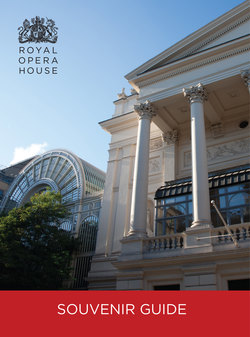Читать книгу The Royal Opera House Guidebook - The Royal Opera House - Страница 15
На сайте Литреса книга снята с продажи.
ОглавлениеMuseum. It was vast and grandiose, the largest theatre in the world, modelled to some extent on the Parthenon in Athens, with an imposing facade on Bow Street. It opened in 1809 with a production of Shakespeare's Macbeth. For the next 50 years Covent Garden was devoted to a wide range of opera, ballet, music and drama including lavish productions of various plays by Shakespeare. The composer Carl Maria von Weber was the musical director for a time. He composed his opera Oberon for Covent Garden, where it was first performed in 1826.
By now, ballet was taking a stronger place in the repertory. Marie Taglioni, the greatest exponent of Romantic ballet, danced in the 1832 London premiere of La Sylphide (an earlier version of the ballet than the Bournonville version familiar to audiences today). Promenade concerts were also introduced to Covent Garden around this time.
The vast auditorium became increasingly less suited to the more intimate style of stage presentation then becoming the fashion. With this and the introduction of the Theatres Act of 1843 (which broke the monopoly of patent theatres and allowed many more theatres to open), Covent Garden fell on hard times, and was closed in 1846.
In 1847, refurbished, the theatre re-opened as the Royal Italian Opera House with a performance of Rossini's Semiramide. This was a significant point in the history of opera at Covent Garden. The newly installed opera company had defected from its former home in the Italian Opera House not far away in the Haymarket (now Her Majesty's Theatre), following disputes with the management. So, at the expense of its rival opera house, Covent Garden acquired a resident company under the musical direction of the Italian conductor Michael (born Michele) Costa.
